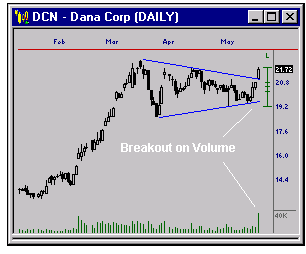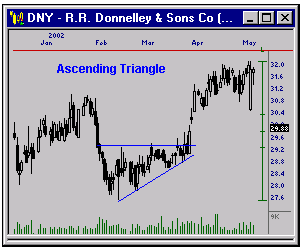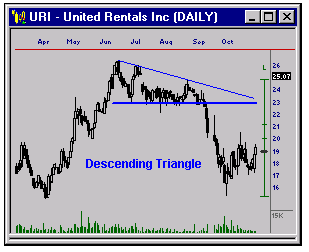Tightening Price Action Leads to a BreakoutThere are various forms of consolidation and they occur anytime there is an equilibrium of buyers and sellers. One of the most predictive consolidation formations is the triangle. A triangle forms as a security begins to set up a trading range that continually tightens. When we look for triangles, it is important to note that there are basically three kinds: Symmetrical, Ascending and Descending. Symmetrical Triangles are formed when we can draw definite trend lines across the lows and the highs of price activity. Symmetrical Triangles can breakout to either side of the formation, but usually the breakout occurs in the direction of the previous trend. An Ascending Triangle is formed when we can draw a resistance line across the highs and an upward trend line across the lows. This formation will usually see the breakout occur to the upside, or through the resistance level. A Descending Triangle is similar to the Ascending Triangle. It occurs when we can draw a support line across the lows and a downward trend line across the highs. Descending Triangles usually break to the downside, or through the support level. When we spot one of these patterns, we are looking for a breakout on volume. That is to say that when price moves through on of the levels of these formations, we want to see large volume on the breakout bar. Also, remember that often the strongest breakouts occur about 2/3rds into the formation. Many times traders will miss the breakout move while waiting for the formation to complete. We must keep in mind that triangles are composed of support, resistance and/or trend lines, and a break of any of these lines is significant - particularly on volume. |

DNC's Symmetrical Triangle breakout on volume about
2/3rds into the formation.

The Ascending Triangle for DNY breaks through the
resistance level as expected.

URI falls through the support level of the Descending
Triangle about 2/3rds into the formation.
|